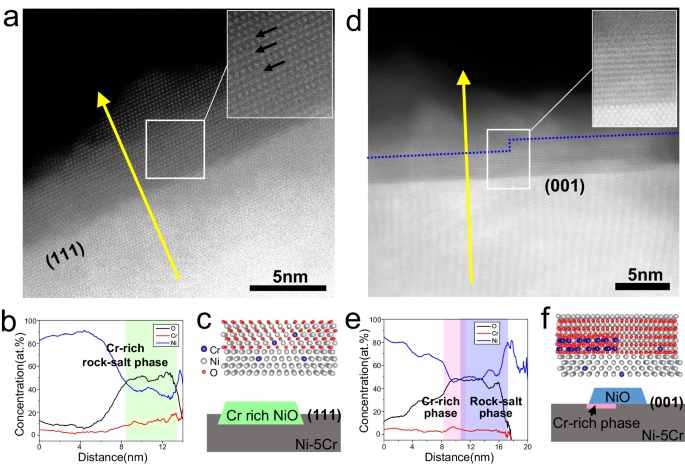2024-09-05 パシフィック・ノースウェスト国立研究所(PNNL)
<関連情報>
- https://www.pnnl.gov/publications/atomic-origin-surface-dependent-oxidation-metals-and-alloys
- https://www.nature.com/articles/s41467-024-50576-7
金属/酸化物界面における選択的原子ふるい分けによる超酸化耐性 Selective atomic sieving across metal/oxide interface for super-oxidation resistance
Shuang Li,Li Yang,Jijo Christudasjustus,Nicole R. Overman,Brian D. Wirth,Maria L. Sushko,Pauline Simonnin,Daniel K. Schreiber,Fei Gao & Chongmin Wang
Nature Communications Published:21 July 2024
DOI:https://doi.org/10.1038/s41467-024-50576-7

Abstract
Surface passivation, a desirable natural consequence during initial oxidation of alloys, is the foundation for functioning of corrosion and oxidation resistant alloys ranging from industrial stainless steel to kitchen utensils. This initial oxidation has been long perceived to vary with crystal facet, however, the underlying mechanism remains elusive. Here, using in situ environmental transmission electron microscopy, we gain atomic details on crystal facet dependent initial oxidation behavior in a model Ni-5Cr alloy. We find the (001) surface shows higher initial oxidation resistance as compared to the (111) surface. We reveal the crystal facet dependent oxidation is related to an interfacial atomic sieving effect, wherein the oxide/metal interface selectively promotes diffusion of certain atomic species. Density functional theory calculations rationalize the oxygen diffusion across Ni(111)/NiO(111) interface, as contrasted with Ni(001)/NiO(111), is enhanced. We unveil that crystal facet with initial fast oxidation rate could conversely switch to a slow steady state oxidation.



